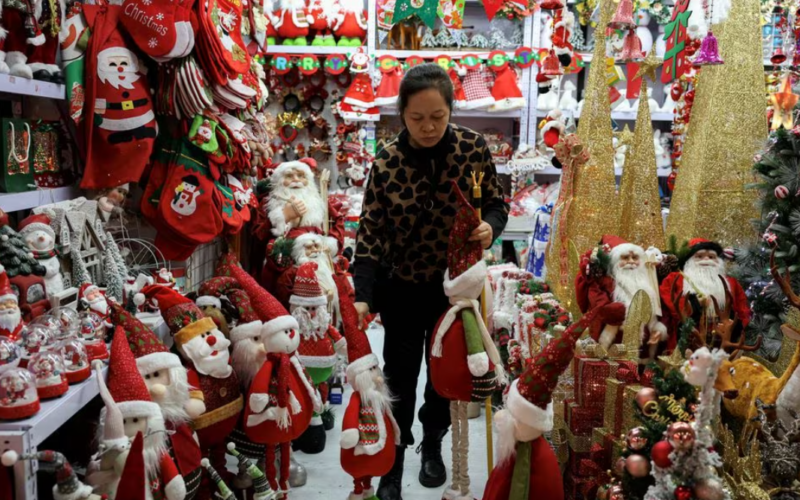As Christmas approaches in China, the nation is adorned with glittering decorations, ushering in a festive atmosphere that blends traditional celebrations with modern trends. However, beneath the shimmering lights and festive cheer, there is a growing concern over the influence of foreign customs and cultural expressions, prompting discussions about the impact of globalization on China’s cultural identity.
The streets of major Chinese cities transform into a spectacle of lights and decorations during the Christmas season, with festive displays adorning shopping districts, public spaces, and entertainment venues. The infusion of Christmas-themed decor has become an integral part of the holiday season in urban China, reflecting a widespread embrace of the festivities associated with this Western celebration.
While the visual splendor of Christmas decorations captivates residents and tourists alike, the increasing prominence of foreign-influenced celebrations has sparked debates about the potential dilution of China’s cultural heritage. Some critics argue that the widespread adoption of Western holidays like Christmas may contribute to a cultural homogenization, eroding unique Chinese traditions and values.
From a journalistic perspective, the coverage of Christmas festivities in China offers an opportunity to explore the evolving dynamics of cultural exchange and globalization. Interviews with cultural experts, sociologists, and individuals on the streets can provide insights into the motivations behind the widespread adoption of Christmas celebrations and the impact on China’s cultural landscape.
The presence of Christmas in China is not solely a product of Western influence; it also reflects the country’s openness to diverse cultural expressions and the global exchange of ideas. The Chinese government, recognizing the economic potential of the holiday season, has supported and even promoted the festive atmosphere to stimulate consumer spending and boost the retail sector.
However, the increasing prominence of Christmas in China raises questions about the preservation of cultural diversity and the potential challenges of balancing global influences with the safeguarding of traditional values. As China continues to engage with the world on various fronts, the intersection of cultural identities becomes a nuanced aspect of the country’s ongoing evolution.
The concern over foreign influence on traditional Chinese celebrations extends beyond Christmas, touching upon broader discussions about the impact of globalization on cultural identity. China’s rich tapestry of traditions, spanning thousands of years, faces the dual challenge of embracing global connectivity while safeguarding its distinctive cultural heritage.
The presence of Christmas in China also signifies the evolving nature of religious and cultural expressions in a country with a diverse tapestry of beliefs. While Christmas is a Christian holiday, its celebration in China often transcends religious boundaries, becoming more of a secular, festive occasion embraced by individuals of various faiths and backgrounds.
In conclusion, the enchanting Christmas decorations that adorn China during the holiday season symbolize a complex interplay between tradition and globalization. The festive atmosphere reflects the nation’s openness to diverse cultural expressions and its engagement with the global community. However, concerns over the influence of foreign customs and potential impacts on China’s cultural identity prompt a nuanced exploration of the evolving dynamics shaping the country’s festive celebrations. As Christmas becomes an increasingly integral part of the holiday season in China, the nation navigates the delicate balance between preserving its rich cultural heritage and embracing the diverse influences that accompany global interconnectedness.








